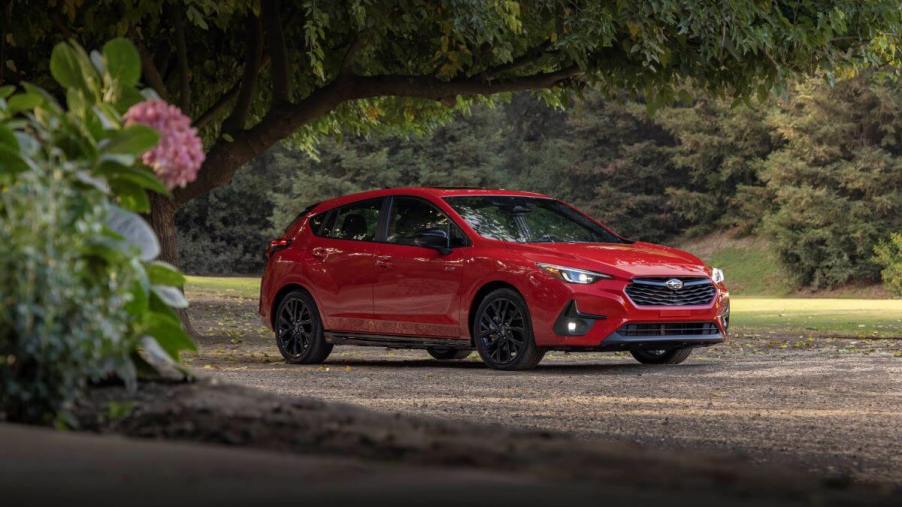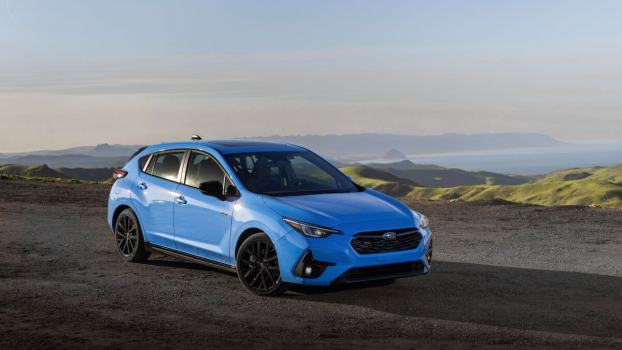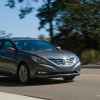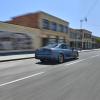
The 2024 Subaru Impreza RS Is Far More Mature Than Its Predecessor
The Subaru Impreza RS debuted in the U.S. in 1998 and immediately made a splash among enthusiasts. The RS was fitted with a 2.5-liter boxer engine underneath a hood sporting vents and an air scoop bigger than the intake on most residential vacuums. It sported larger brakes, gold-finished wheels, a sizeable spoiler, and a manual transmission. The RS effectively epitomized hooliganism until it was later replaced by the WRX in the early 2000s.
With the Impreza entering a new generation for 2024, the RS is back, and it’s a far different approach, for better or worse, than the model that debuted when we were all “Gettin’ Jiggy Wit It.”
The Impreza RS is an all-new take on the nameplate
With the revival of the Subaru Impreza comes the sixth generation of the model for 2024. The most notable change is the Impreza is now offered, to paraphrase Henry Ford, in any body style you like so long as it’s a hatchback — the sedan body style is dead.
Additionally, there’s no “stick” to be found by the driver’s right hand. All models are now fitted with a continuously variable transmission.
While that fact can let down enthusiasts, a 10% stiffer chassis helps the RS’ performance credentials. To boot, the new Impreza is far more modern and now features more driver aids and Subaru’s 11.6-inch Starlink infotainment system in the RS. There are also available niceties like a Harman Kardon audio system, moonroof, and a power driver’s seat with lumbar support — an important feature for those who now need it because they danced to “Gettin’ Jiggy Wit It” at their high school’s homecoming dance.
So, even though the RS has returned, the Impreza is far more developed than its predecessor. And that’s not such a bad thing.
The Impreza RS is no longer an automotive hoodlum
The 2024 Subaru Impreza RS is a notable step up from the standard RS in terms of performance. Its Boxer engine develops 182 horsepower, 30 more ponies than the paltry 152-hp offered in the non-RS model. While there’s no manual, the RS is fitted with paddle shifters and a “manual mode” to give drivers some notion of going through the non-existent cogs themselves. There are also larger, 18-inch wheels finished in dark gray instead of gold, and blacked-out exterior flourishes on the grille and side spoilers.
Additionally, the RS is far more mature than the prior model bearing the name.
The RS’ ride quality is downright comfortable. It seems the added rigidity of the chassis allowed the engineers to tweak the spring settings, delivering a ride that is mostly taut in corners but comfortable enough on bumpy roads to beguile its sub-$30,000 asking price.
The interior also feels solid. Yes, it’s still awash in hard plastic. Still, all the controls and interior bits feel sturdy, as if they can hold up to the rigors of a teenager who has gotten ahold of mom or dad’s key fob or the automotive interior torture test that is transporting small children.
Even the doors feel more secure. Closing them results in a satisfying thump one expects from a model that costs significantly more. Then, once you’re inside, the cabin is surprisingly quiet — road and tire noise are well hushed.
The added tech, like the vertically-oriented Starlink touchscreen, heated front seats, blind-spot detection, and rear-cross traffic alert, only add to the maturity of the RS.
The RS may wear the nameplate of a perceived troublemaker, but the new model is a fully baked, all-wheel drive practical hatchback with a family-friendly MSRP of $27,885 and the added zest of some added power. And, maybe I’m getting old, but I appreciate there’s no giant wing out back or big hood scoop to see over. With the age and look of the new Impreza, they would seem out of place, anyway.
The Impreza RS, like those who grew up idolizing or driving the original, has grown up. Though subjective, it appears far better off for it.




